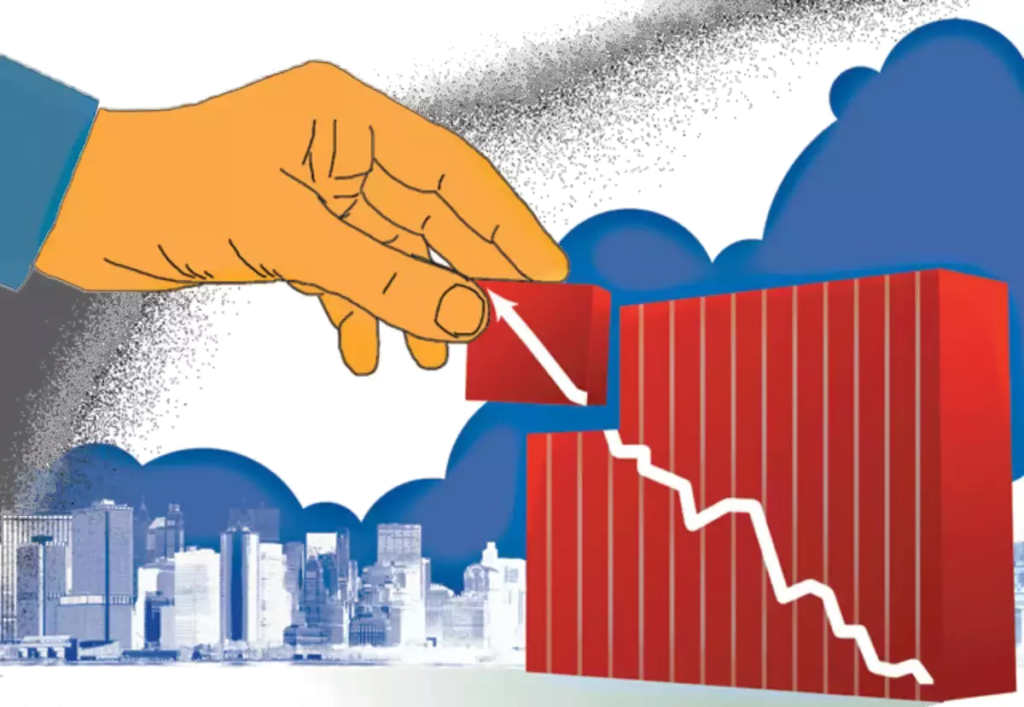Nifty achieves All-Time High with a strong market, increased profits, positive economic signals, and confident investors.
5 Factors in Contributing Nifty Reaching an All-Time High

Growth:
- During the last quarter, the economy showed a notable increase in growth, with the GDP expanding by 6.1% compared to the same period the previous year. This indicates positive momentum and progress in the economy & Nifty’s All-Time High Factor.
- Resulting, Economists have revised their growth forecasts for FY24, anticipating a stronger economic outlook. This suggests a positive outlook for future economic performance.
LOWER INFLATIONARY PRESSURE:
- There are signs of core inflation starting to soften, indicating a potential easing in price levels. This development may have implications for overall economic conditions.
- The RBI has put a temporary halt on its interest rate actions, but analysts expect rate cuts to take place in the last quarter of 2023.
CORPORATE EARNINGS:
- Consumer confidence has rebounded and is now close to the levels seen in 2019. This indicates that consumers are more optimistic about the current economic conditions & creating an All-Time High
- MSCI’s forecast expects India to experience earnings growth of 17.9% in fiscal year 2024. This suggests a positive outlook for corporate earnings in the country during that period.
STRUCTURAL FACTORS:
- The government’s emphasis on infrastructure spending can lead to a multiplier effect. Investing in infrastructure can boost different sectors, leading to more economic growth and benefits.
- The manufacturing business is expected to experience robust growth due to the “China+1” theme. The concept involves reducing dependence on China for manufacturing and exploring opportunities for growth in other countries or regions.
- India’s labor force is projected to increase by 100 million people from 2020 to 2023,resulting in Nifty’s All-Time High Record; while China’s labor force is expected to decrease by 25 million people. This suggests a significant shift in the labor dynamics between the two countries during this period.
STRONG EXTERNAL SECTOR:
- There has been a remarkable transformation or significant change in the past nine months in terms of the country’s external or international trade activities
- The current account deficit (CAD) has significantly decreased from a 9-year high that was reached late last year. Imbalanced imports and exports show improvement, positively impacting the country’s economy.
- Strong foreign inflows, specifically in the form of foreign investments, have led to a significant surplus in the balance of payments (BoP). This surplus indicates that more funds are entering the country from abroad than leaving it, creating a favorable and comfortable financial position for the nation
- The foreign exchange reserves are once again nearing the $600 billion mark. This indicates that the country’s holdings of foreign currencies and assets are growing, which can contribute to economic stability and provide a cushion against potential financial risks; which contributed in acheiving Nifty’s All-Time High.
These are the fundamental drivers in creating the market to reach All-Time Highs.
But, there are some developing risks as well, which can affect the market in the coming days.
The Risks are:

DETERIORATING GLOBAL GROWTH:
When global economic growth is declining, it can hurt India’s exports. A lower global GDP implies reduced demand for goods and services from India, leading to potential challenges for the country’s export-oriented industries and overall trade performance.
VALUATION PREMIUM:
- India’s stock market is currently trading at a forward price-to-earnings (P/E) ratio of 20.5 times. This valuation is 17% higher than the 15-year average, indicating that investors are willing to pay a higher price for each unit of expected earnings.
- The current valuation premium of India compared to other emerging markets is 70%, which is higher than the historical average of 50%. This suggests that investors are currently attributing a greater value or willingness to pay a higher price for Indian assets compared to assets in other emerging markets.
MONSOON RISK:
There is a potential risk to India’s agricultural GDP growth recovery due to the looming threat of El Nino. El Nino is a weather phenomenon that can adversely affect monsoon patterns, leading to reduced rainfall and potentially impacting agricultural productivity and output in India.
To Sum Up
To sum up, the factors we have discussed can have both good and bad effects on India’s economy. On one hand, the strong external sector and high forex reserves are positive indicators. On the other hand, the worsening global growth and potential monsoon risks pose challenges. The high valuation of Indian stocks shows investor confidence but could also mean they are overpriced. It’s important for everyone involved to carefully handle these factors, make the most of the strengths, addresses the risks, and take appropriate actions to ensure India’s economy continues to grow sustainably.
Also, Check out our article on Tax Deducted at Source (TDS)
Disclaimer: The information provided in this Blog is for educational purposes only and should not be construed as financial advice. Trading in the stock market involves a significant level of risk and can result in both profits and losses. Spider Software & Team does not guarantee any specific outcome or profit from the use of the information provided in this Blog. It is the sole responsibility of the viewer to evaluate their own financial situation and to make their own decisions regarding any investments or trading strategies based on their individual financial goals, risk tolerance, and investment objectives. Spider Software & Team shall not be liable for any loss or damage, including without limitation any indirect, special, incidental or consequential loss or damage, arising from or in connection with the use of this blog or any information contained herein.





